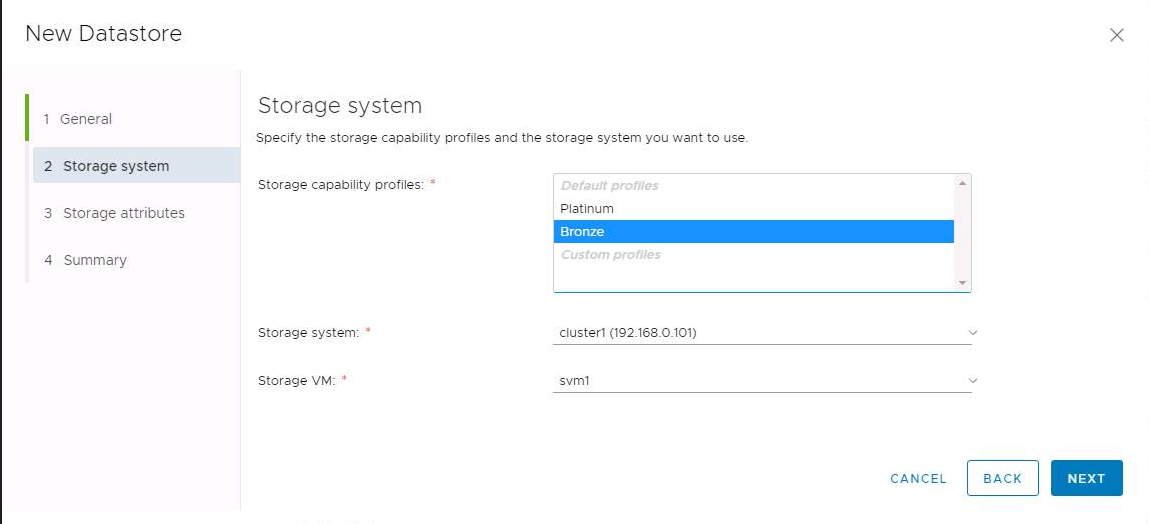VASA Provider:NetAppユニファイドアプライアンス(UA)をアップグレードすると、データストアのプロビジョニング時にユーザ定義のストレージ機能プロファイル(SCP)を使用できなくなる
環境
- NetAppユニファイドアプライアンス(UA)9.x
- VMware vSphere 6.x
問題
UAでインプレースアップグレードを実行すると、ユーザが作成したSCPはデータストアのプロビジョニング中に使用できなくなります。これは次の状況で発生します。
- メジャーバージョン間のアップグレード、9.6 > 9.7
- マイナーバージョン間のアップグレード、9.7>9.7P1
この場合、アップグレード前に3つのユーザ作成SCPが作成されています。
any_scp_template
customer_template
customer_template_2

アップグレード後、データストアプロビジョニングウィザードの選択可能なSCPのリストにデータストアが表示されなくなります。

SCPは VSC >[Storage Capability Profile]に表示されますが、 [Update] と [Clone]のオプションは グレー表示されます。
